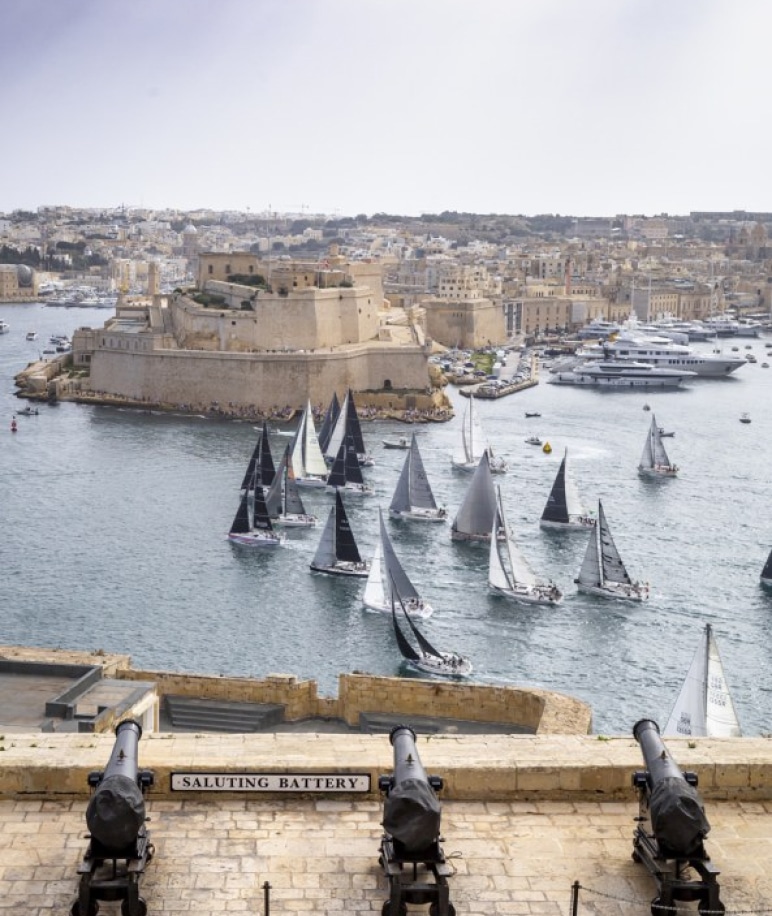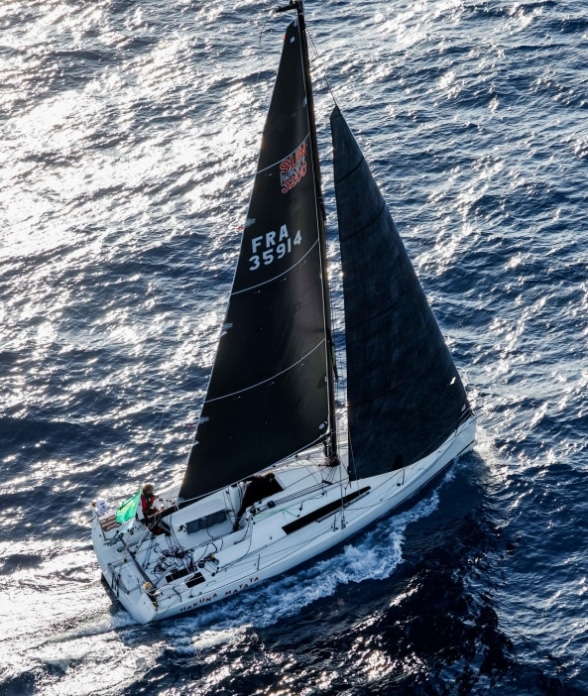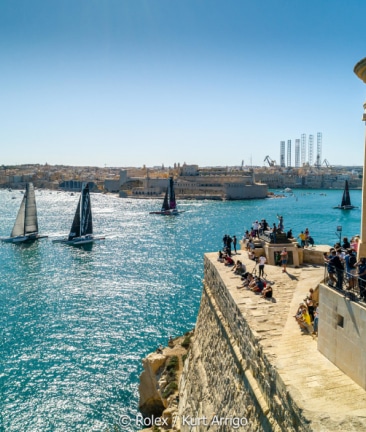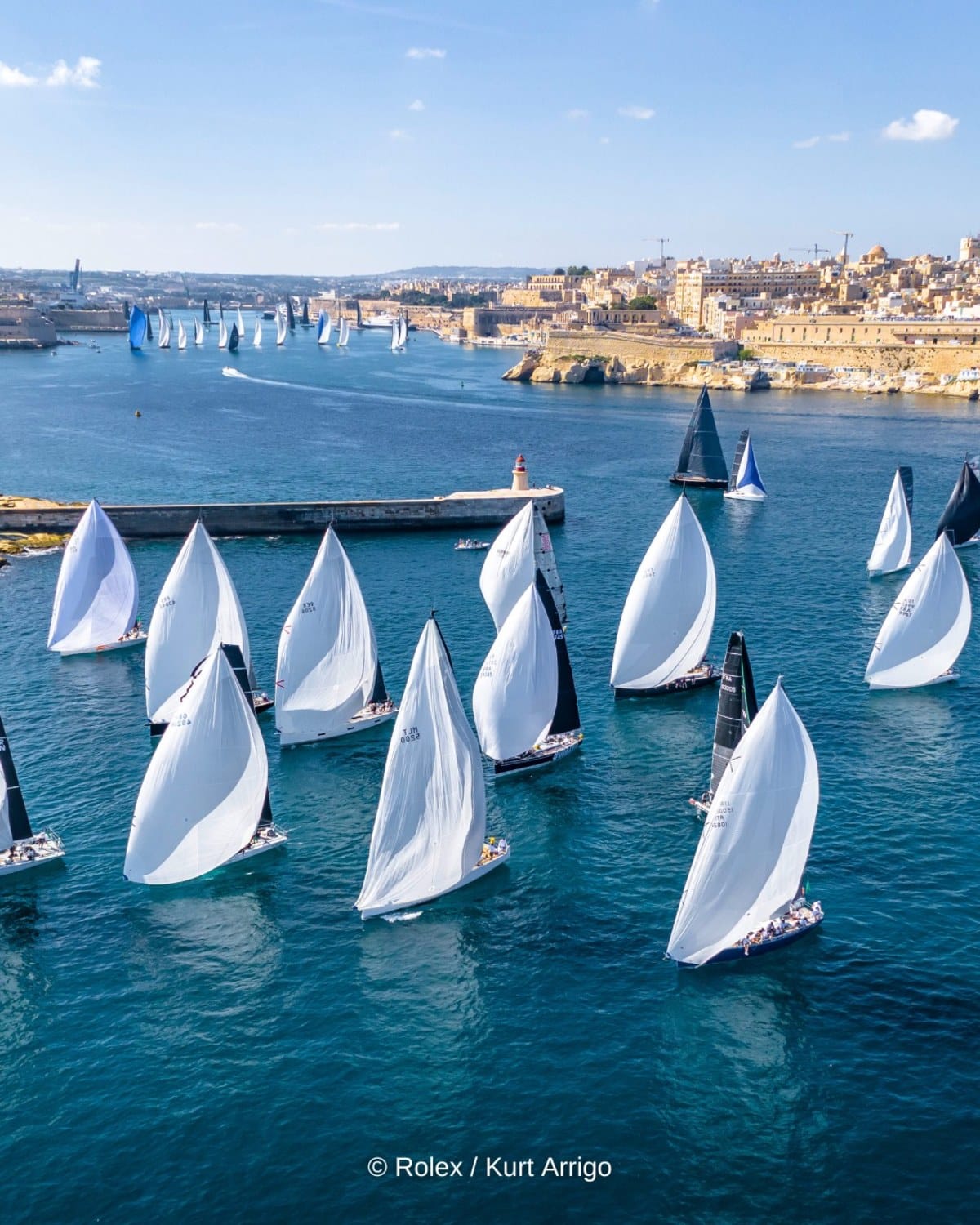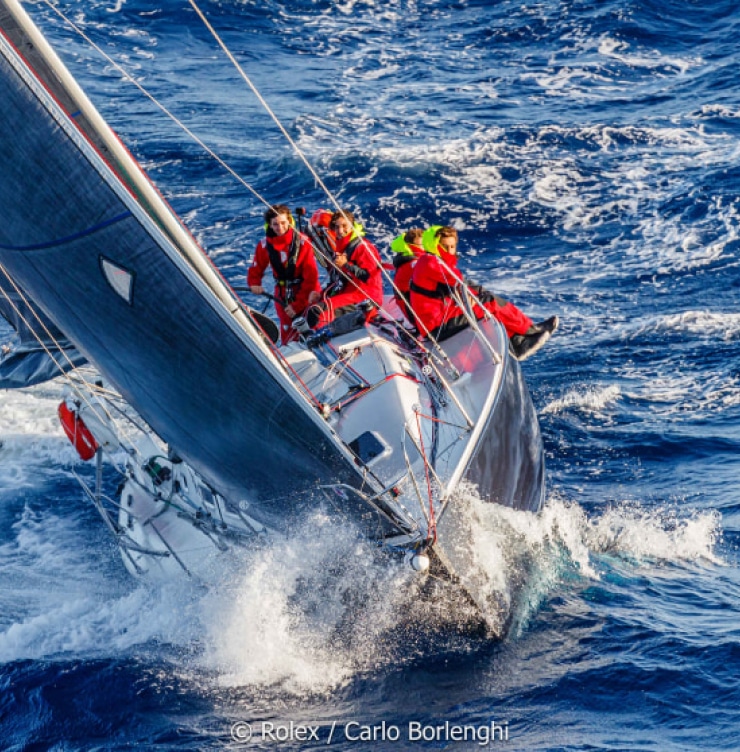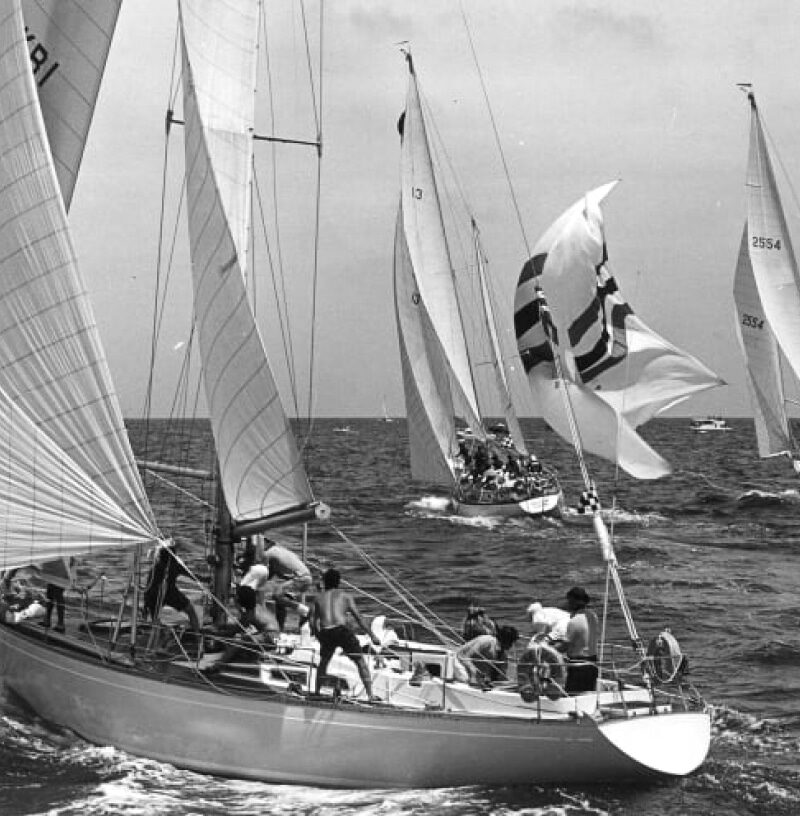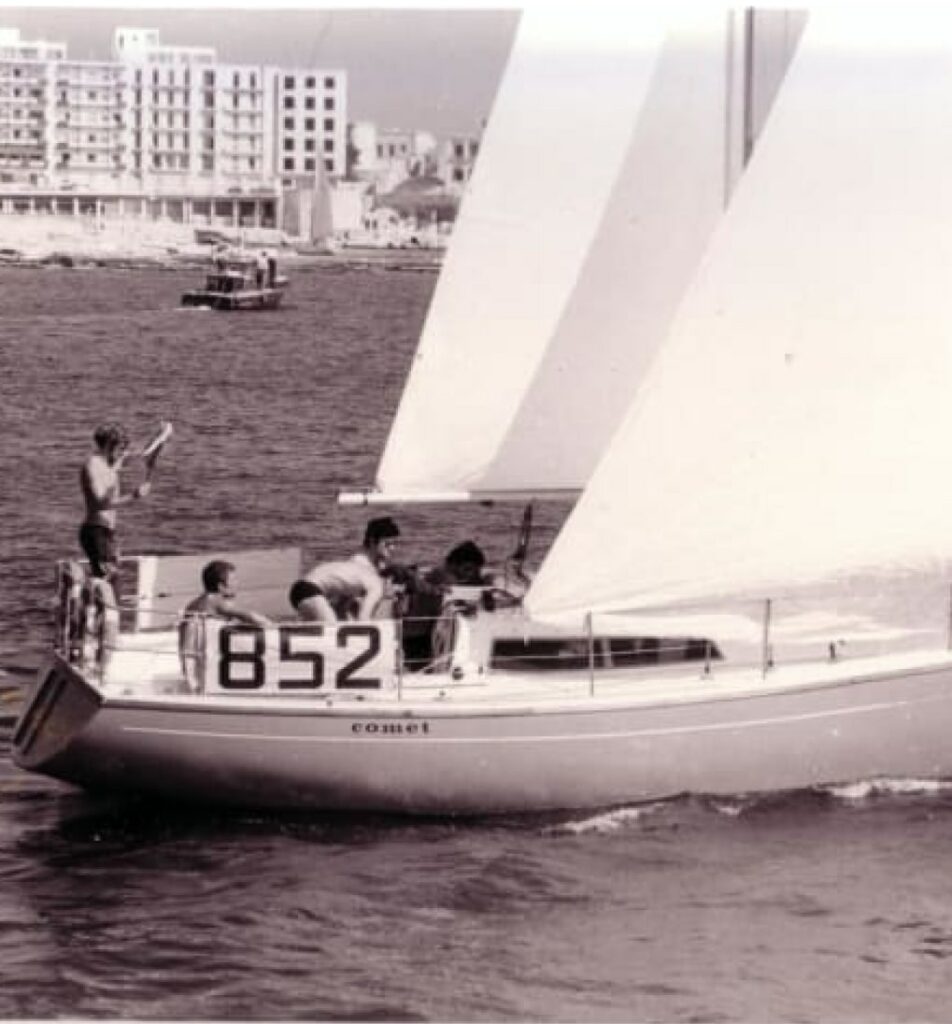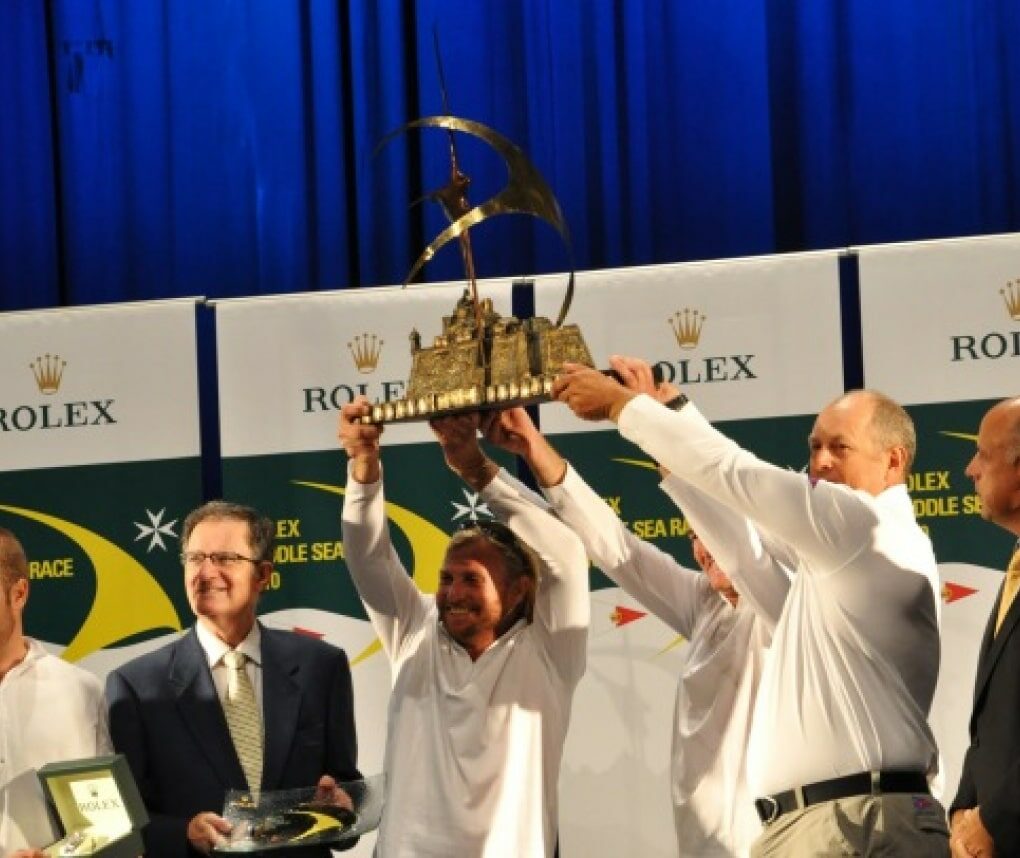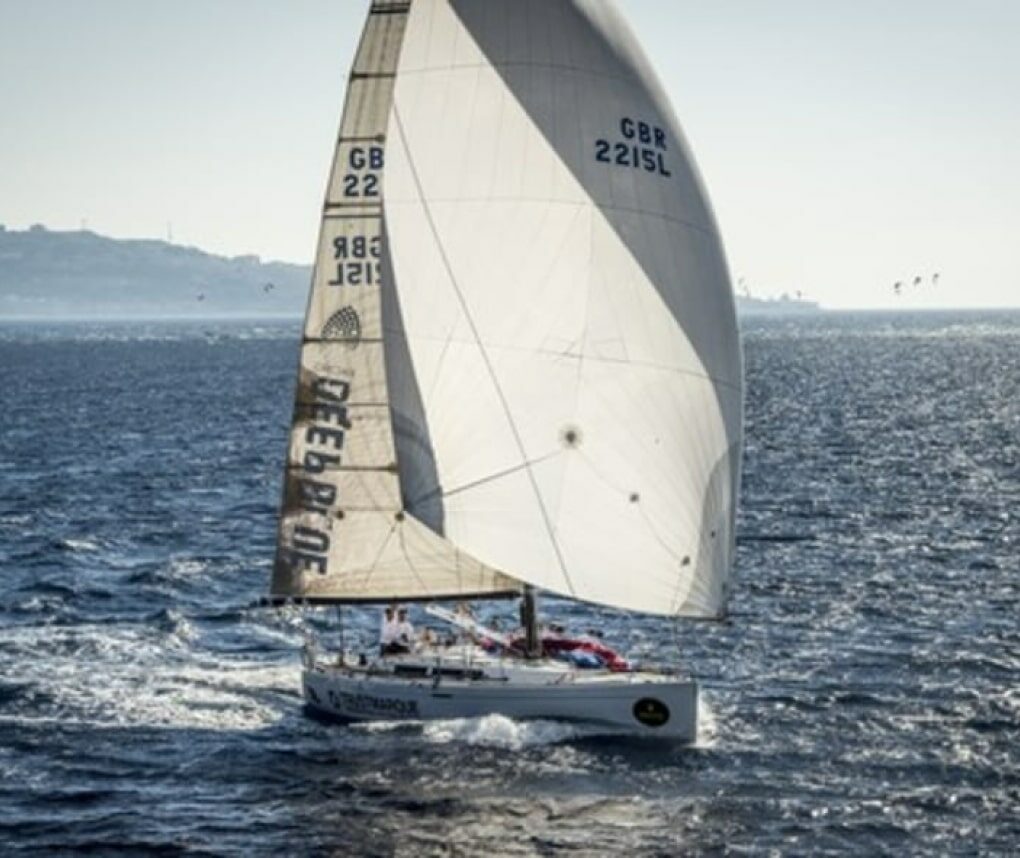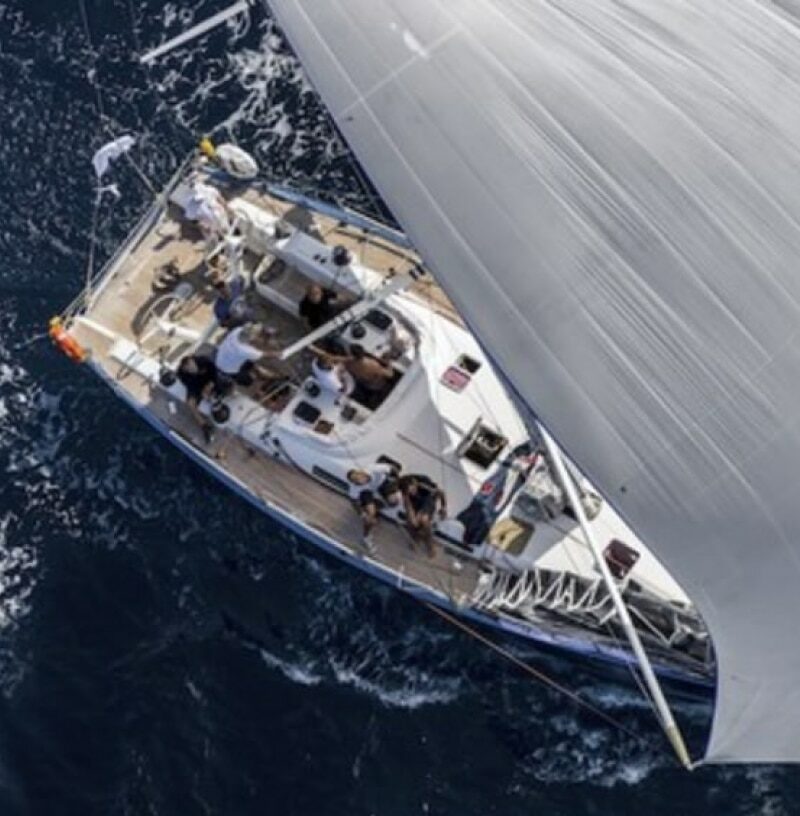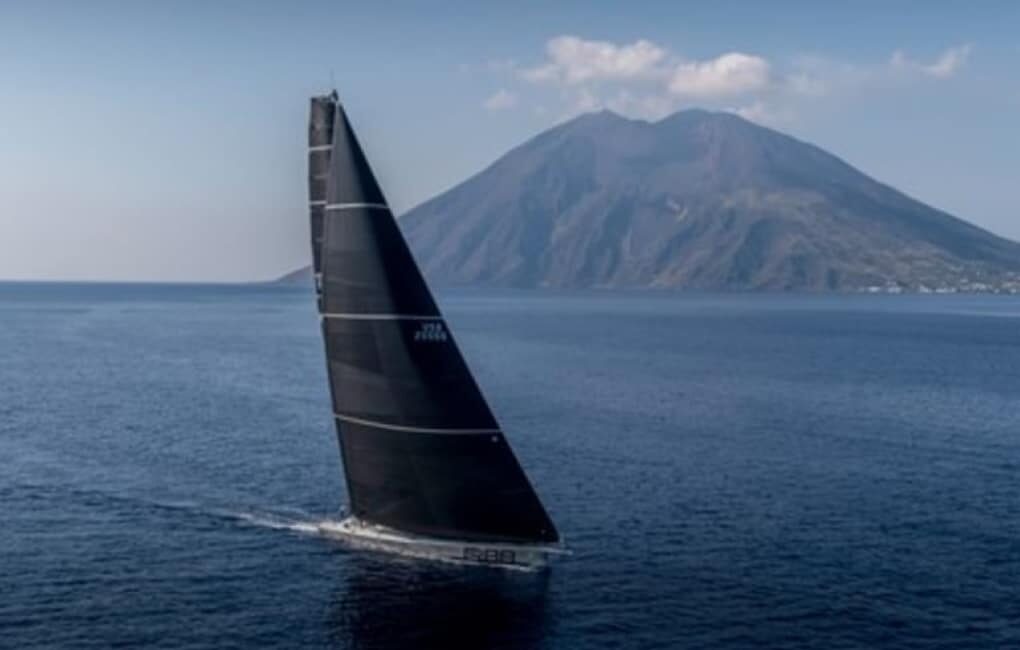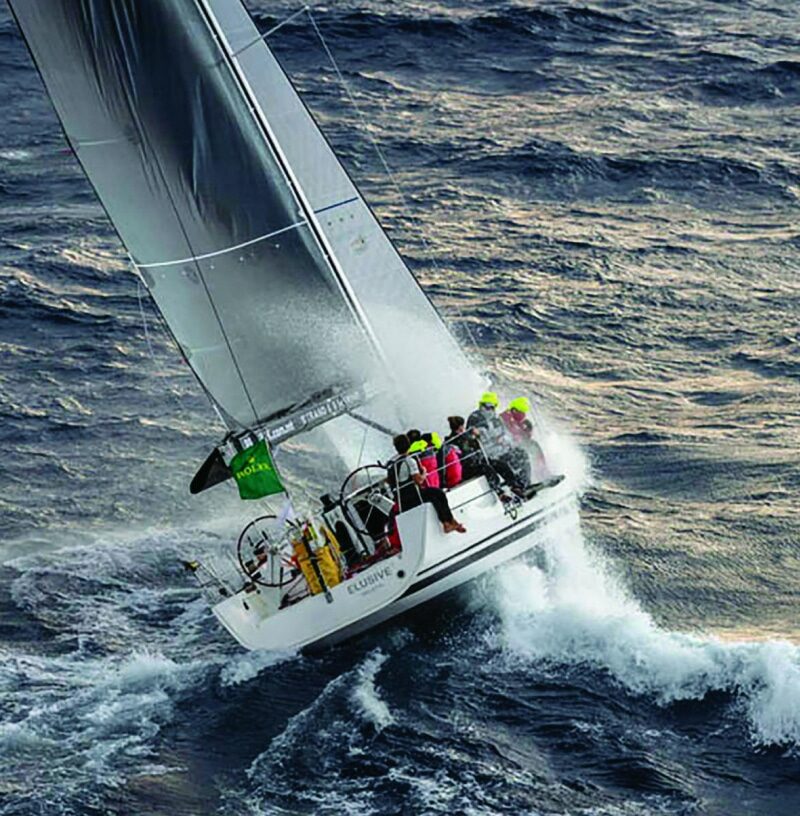in the beginning
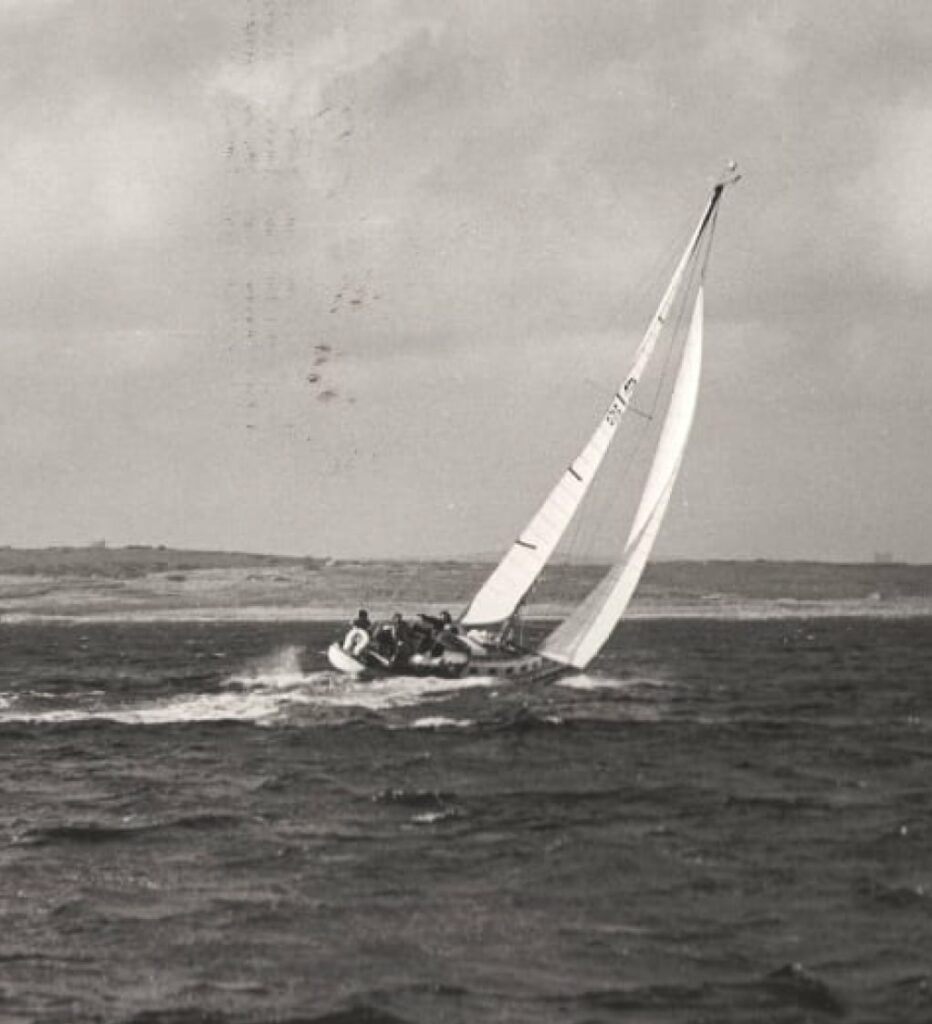
In an inspired moment, Paul insisted that, if the Royal Malta Yacht Club was to be involved, the race should be centred on the Malta, both starting and finishing there. As a result, the racecourse became a circumnavigation of Sicily including Lampedusa, Pantelleria and the Egadi and Aeolian islands. The chosen course, at around 610nm, would be a similar distance to the RORC’s own famous offshore event, the (then, 608nm) Fastnet Race, sponsored by Rolex since 2001. The initial decision was to sail the route clockwise, heading from Malta to Lampedusa.
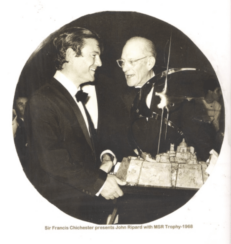

The Rolex Middle Sea Race was created as the result of sporting rivalry between two British yachtsmen residing in Malta, Alan Green and Jimmy White, and two Maltese sailors, Paul and John Ripard, both members of the Royal Malta Yacht Club.
Alan (who would go on to become Secretary of the Royal Ocean Racing Club) and Jimmy had proposed a racecourse that was longer than typical in the region, and one designed to offer an exciting competition in windier autumn conditions. The original suggestion was for a course that would start in Malta and finish in Syracuse, Sicily, in one year and then start in Syracuse and finish in Malta, the next.
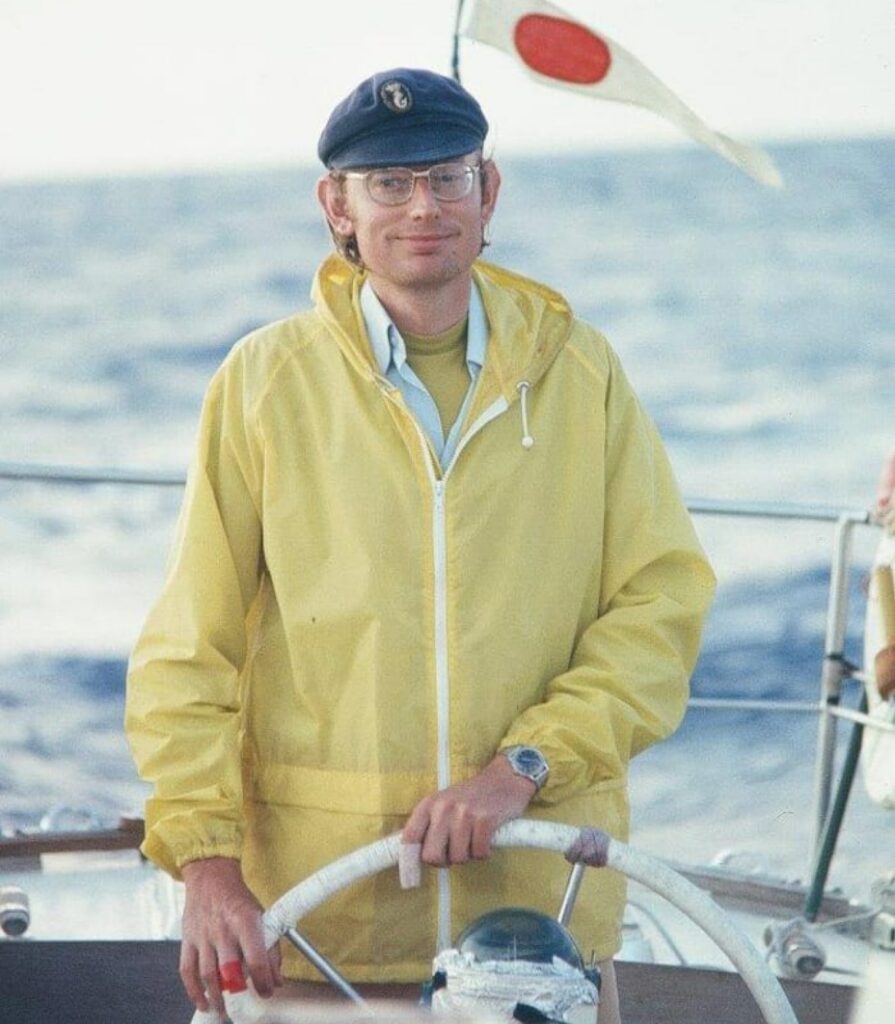
The Ripards presented the idea to the main committee of the RMYC, who enthusiastically backed the concept despite only six months notice to the inaugural race. Alan agreed to run the event on two conditions: he was given complete authority over the arrangements and that he could compete.
Malta's commitment to the new race spread from the top to the bottom. The then Governor-General, H.E. Sir Maurice Dorman, just happened to be the RMYC Commodore and his early support helped to open doors.
The Modern Era
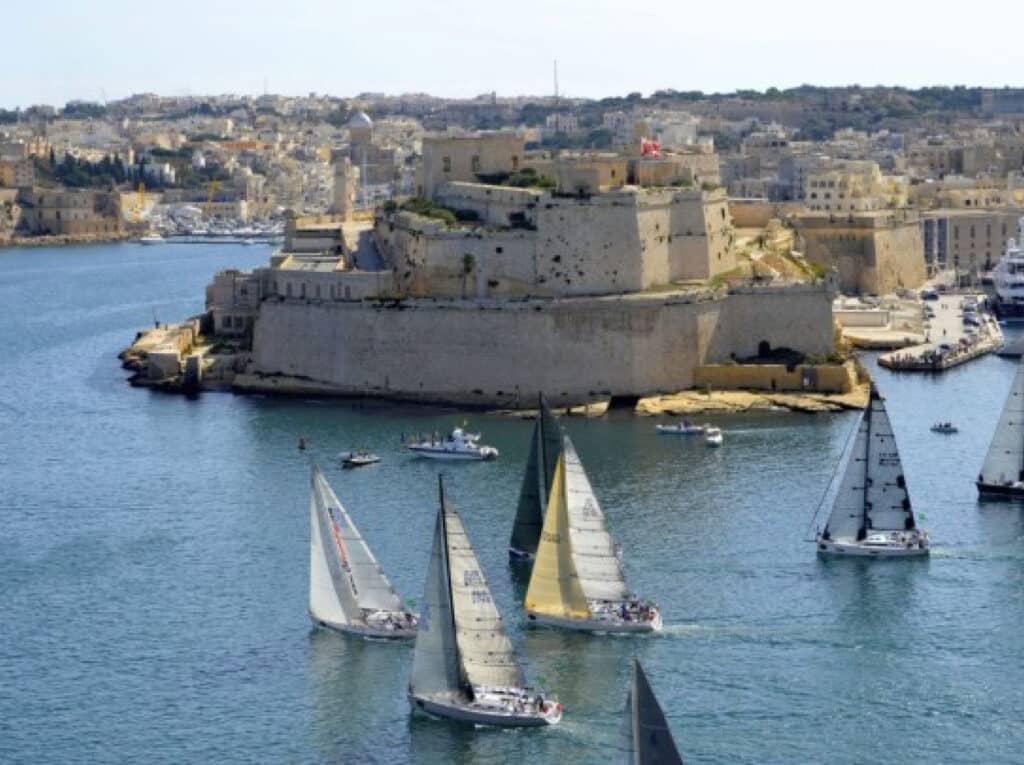
The 28th edition of the race in 2007, looked ready to continue the run of record breaking fleets, with 69 yachts registered and in Malta. However, the weather charts indicated a deep trough of low pressure heading south from northern Europe and reaching the middle of the Mediterranean within the 12 hours of the start and striking the fleet as it made its way around the course. So extreme was the threat, some 16 yachts decided to withdraw on the day before.
Conditions for the start could not have been more perfect, with a solidly north-westerly enabling crews to exit Marsamxett Harbour in good order. The big boats including George David's 90 foot Reichel/Pugh maxi, Rambler (ex. Alfa Romeo), the 75ft Titan 12 and the 60ft Loki powered off towards Sicily in the freshening breeze. During the next 24 hours some 22 yachts retired including Titan 12 as the wind built to gale force. While Rambler scorched around the course, the destruction in her wake was emphasised by the eventual loss of Loki on the northern shore of Sicily after catastrophic gear failure that left the Australian yacht without steering and unable to jury-rig an alternative in the turbulent conditions. Thanks to the bravery of the Italian airforce and coastguard, the crew of Loki was rescued without injury.
Despite their own equipment problems, the crew of Rambler found a way to harness the frontal system and keep on trucking. Once the north-western corner of the course was turned, the downwind afterburners were switched on in 40-45 knots. Only 17 yachts would go on to complete the course, including remarkably one double-handed entry, Slingshot. Rambler would go on to set a new course record of 47 hours, 55 minutes and 3 seconds, bettering the previous one by some 16 hours. Despite bigger, faster, technically more advanced yachts challenging the benchmark time over the intervening period, it would take 14 years for it to be beaten.
In 2001, a revitalised Race Committee brought some fresh thinking to the Middle Sea Race. A more targeted and aggressive marketing strategy was introduced. Most importantly, the search for a new title sponsor was initiated. In 2002, Rolex SA came on board, following two years of involvement with the Malta Rolex Cup. In the years since, the race has witnessed a remarkable increase in entries, growth in the quality of crews and their boats, as well as near global appeal. For many years, the record fleet had been 34 set back in 1974. In 2002 that number was finally broken, with 42 yachts crossing the start line. The number would steadily increase, virtually each year, doubling by 2012 and breaching the seemingly impossible barrier of 100 in 2014, when 122 yachts took part. Apart from 2020, when for Covid reasons only 50 yachts entered, the fleet has exceeded 100 entries, which a current record of 130 set by the 50th anniversary in 2018.
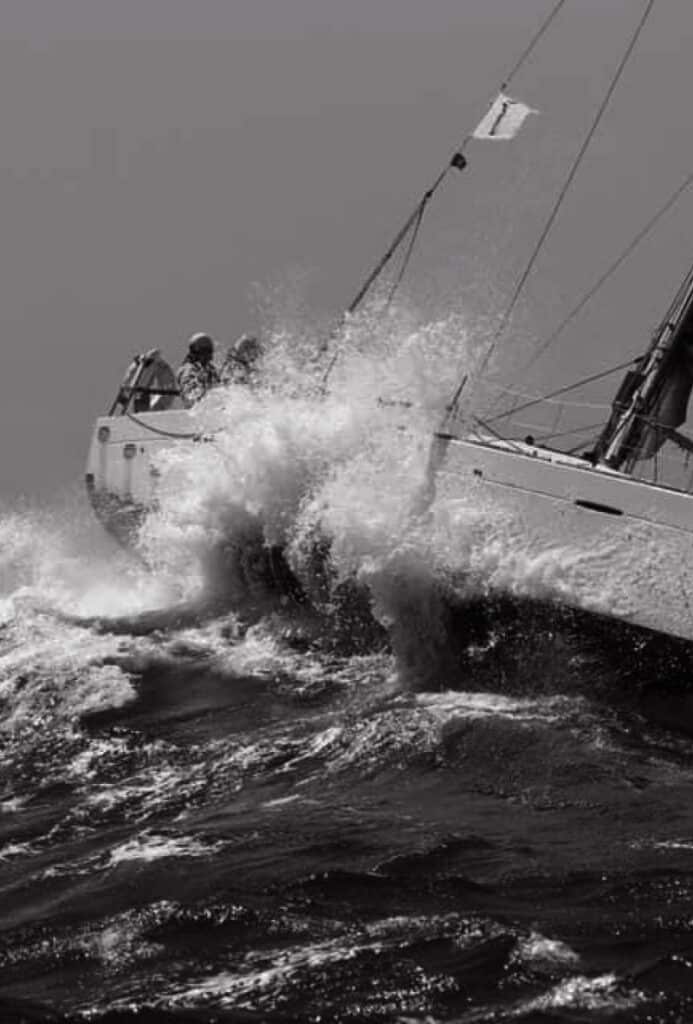
The 42nd edition of the Rolex Middle Middle Sea Race was one of the most spectacular and challenging races for many years, especially for the smaller boats. At times, during the 606 nautical mile expedition, gale force winds and tumultuous seas battered the fleet. Jason Carroll’s MOD70 Argo was first to finish, taking multihull line honours, posting a time that also secured a class win under MOCRA Time correction and lowered the outright race record by an impressive 14.5 hours, finishing in 33 hours, 29 minutes and 28 seconds.
Another course record was set by the 30.48m/100ft maxi Comanche (CAY). Comanche achieved the trifecta of overall winner, monohull line honours and a monohull race record. Comanche’s race record of 40 hours, 17 minutes and 50 seconds was based upon the full course distance of 606nm which it completed, while victory under IRC was over a shorter course distance following the RMYC's decision to finish yachts using the Alternative Finish Line at the South Comino Channel due to the threat of a severe north-easterly making the Marsamxett Harbour finish line untenable. Following considerable disquiet about the impact of the Alternative Finish line on the IRC results, a full review was undertaken and steps were taken to ensure the rules and regulations surrounding the race were fit for purpose. In the course of he review, the club sought feedback from competitors and guidance from the RMYC’s longstanding race partners, including RORC. The result of the painstaking process was a strengthening of the Race Committee through the integration of external, professional support.
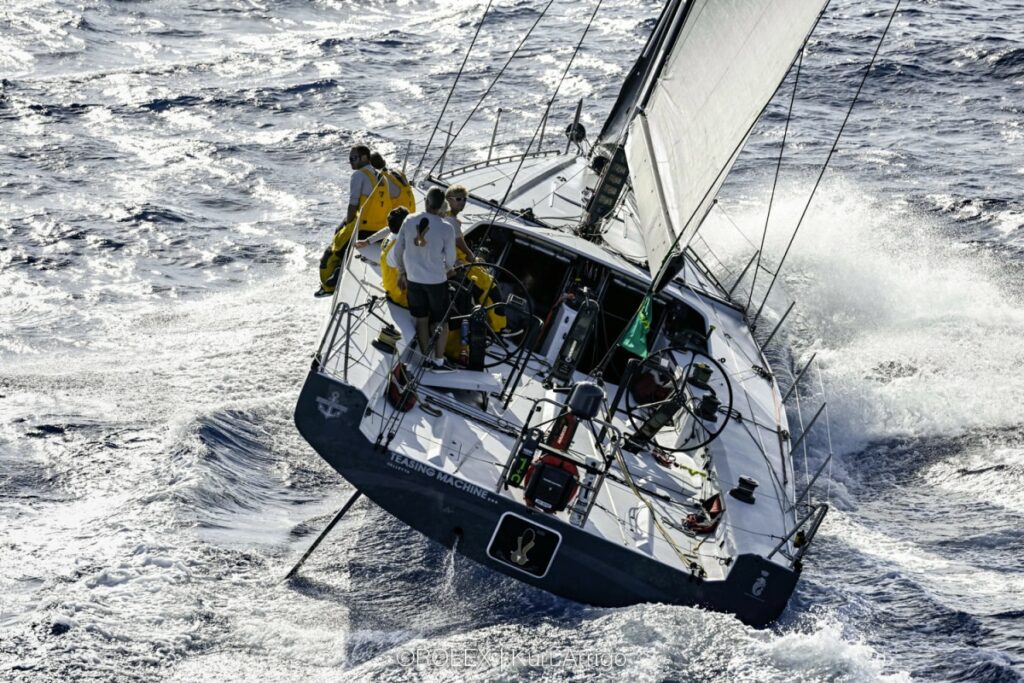
2022, the 43rd in the long and illustrious history of the Mediterranean’s most demanding and renowned 600 mile offshore race, will be remembered for light winds, dogged determination and the remarkable imagery from the racecourse. Its character, so diametrically opposed to the previous year, it is hard to imagine the two races took place over the same track at the same time of year.
The 43rd edition’s fleet ranged in size from 30 feet (9 plus metres) to 100 ft (30.5m) and included some of most powerful monohulls and multihulls competing on the international racing circuit.
Riccardo Pavoncelli’s Italian MOD70 Mana was first to finish less than a minute ahead of French sister ship Zoulou and ten minutes before the Italian Multi70 Maserati. Joost Schultz’s Dutch entry, the 30.48m / 100ft maxi Leopard 3 secured monohull line honours, while Eric de Turckheim was a very popular overall winner under IRC with Teasing Machine, the French NMYD 54.
The 43rd edition, some of the class wars were intense affairs to the finish, while others have appeared walkovers as the competition missed catching the wind train or suffered other injustices in the fickle winds.
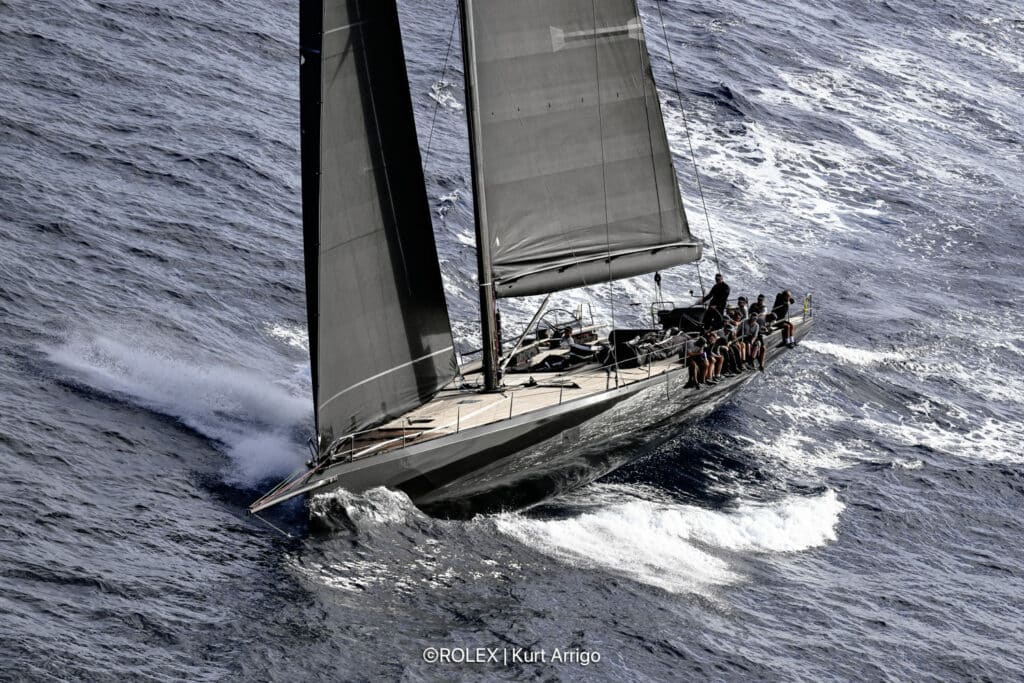
The 2023 edition of the Mediterranean’s most demanding and renowned 600 mile offshore race will be remembered for the mix of conditions and emotions experienced by the international fleet. Unusually, the weather favoured both mammoth and minnow, turtle and hare.
The 44th Rolex Middle Sea Race fleet was sent on its way on Saturday 21st October. 110 yachts representing 26 nations crossed the start line, their 1000 plus crew from close to 50 countries
A powerful maxi will be remembered for an unexpected offshore success, while one of the smallest boats will be recalled for a breath-taking performance that kept everyone on the edge of their seats. Overall winner the 93 foot Bullitt, and second placed 33ft double-hander Red Ruby, separated by only 24 seconds in corrected time, but forever joined in legend.
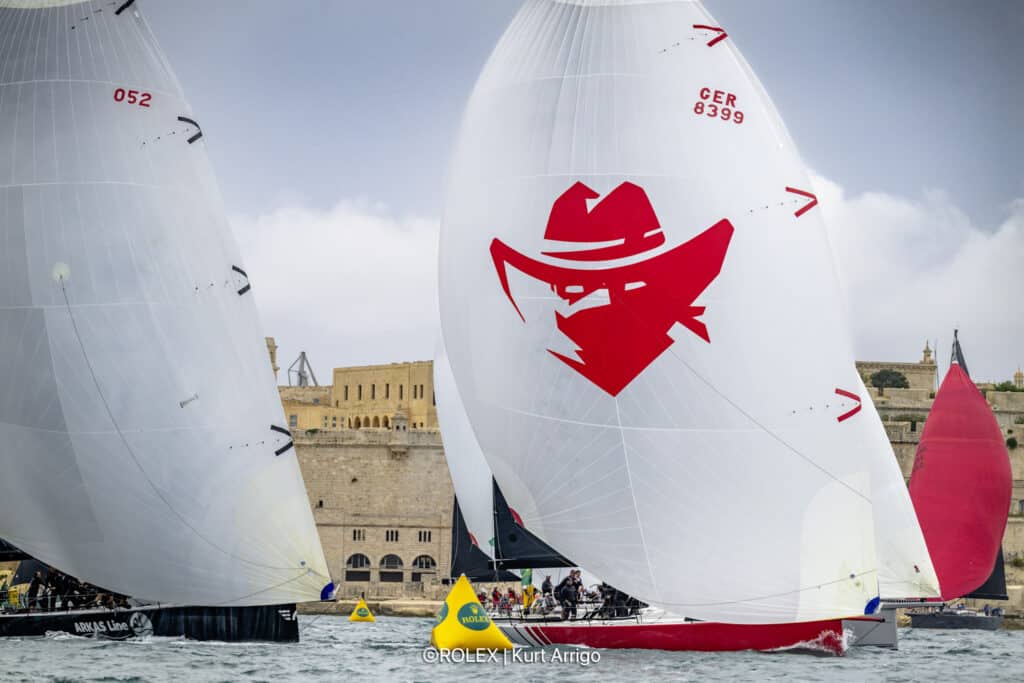
The 2024 Rolex Middle Sea Race was one of the most memorable on record, with fierce, unpredictable weather that tested even the most seasoned sailors. Underwritten by true evidence of camaraderie and team spirit, the story is one of overcoming adversity and pushing through, a story of human endurance, courage and determination.
A professionally-crewed 100ft/30.48m Maxi - Scallywag (David Witt) proved its potency. A young German crew - Red Bandit (Carl-Peter Forster) earned its spurs.
Seng Huang Lee’s Scallywag 100 from Hong Kong propelled the 100 foot / 30.48 metre Maxi to a hard-fought Line Honours victory. Crossing the finish line of the 2024 Rolex Middle Sea Race at 09:43:29 CEST on Tuesday morning, the crew’s elapsed time was two days, 21 hours, 33 minutes and 29 seconds.
Red Bandit is the third German yacht to have won the Rolex Middle Sea Race following in the footsteps of Saudade (1983) and Morning Glory (2006).
The team’s success owes much to a passion for the sport, a desire to improve and a dynamic team spirit. This impressive character allowed Red Bandit to stay on the pace throughout a testing race that mixed light winds with strong, and rough seas with flat.
